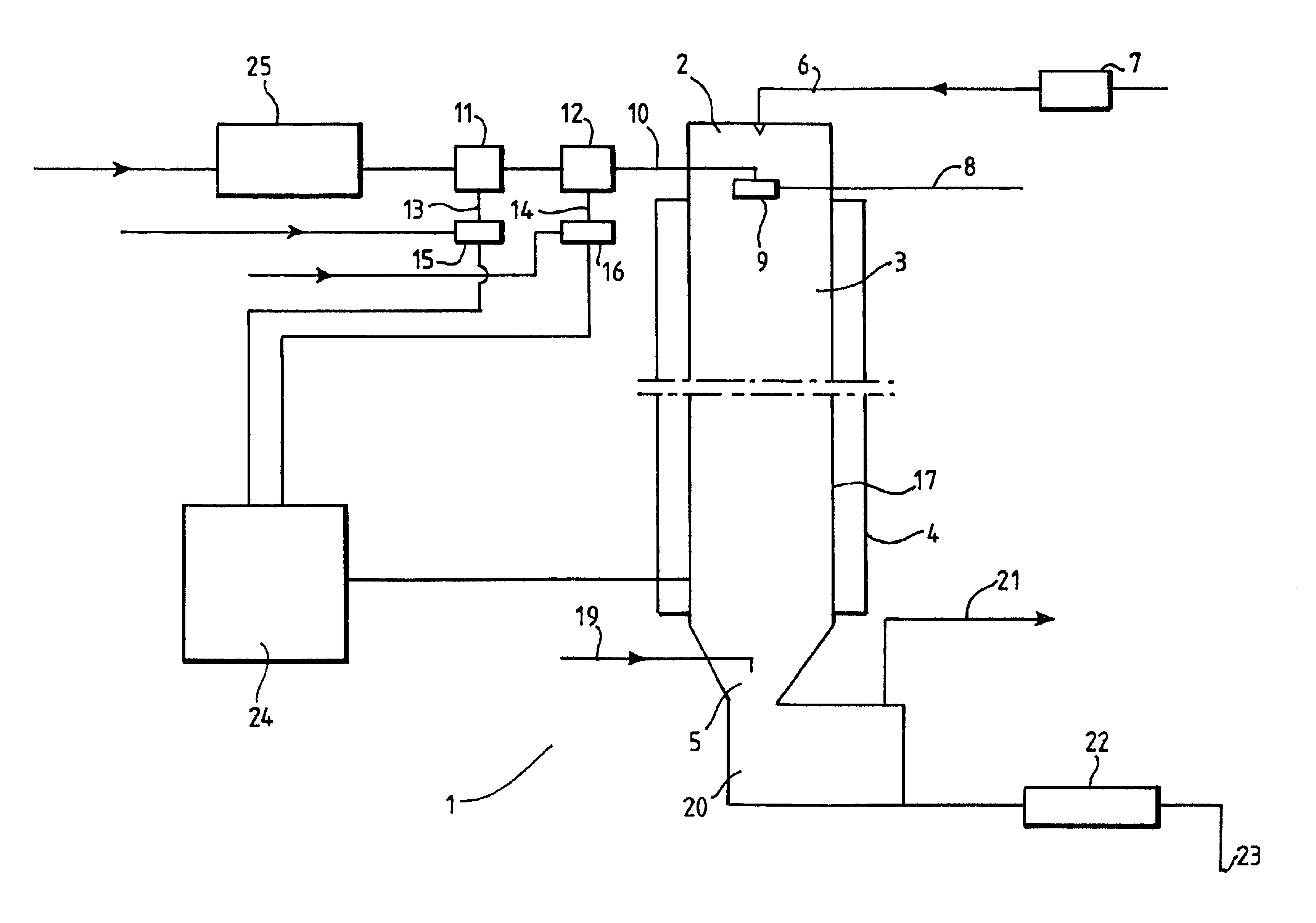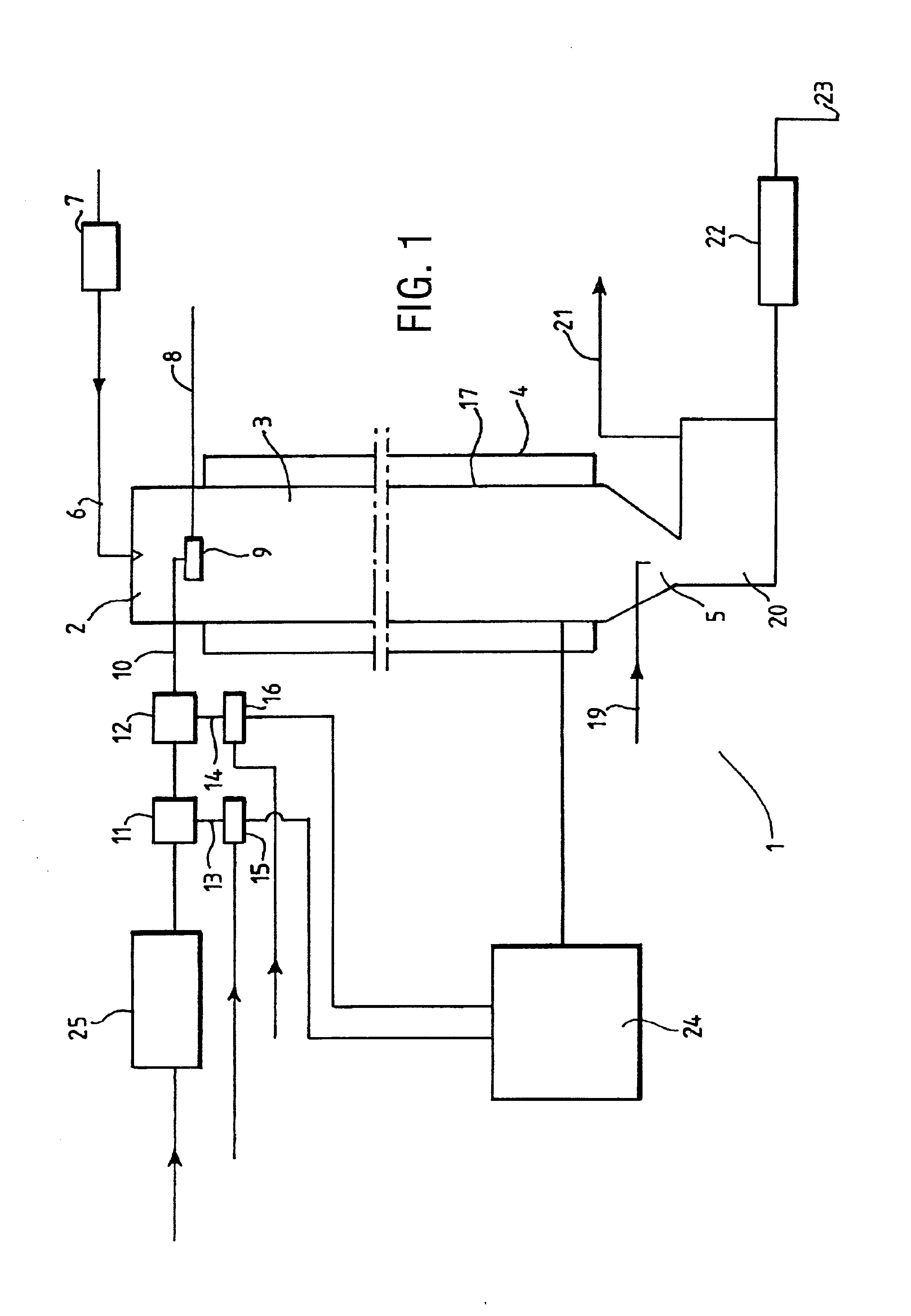Polymerization reactor and process
a technology of polymerization reactor and process, which is applied in the direction of chemical/physical/physical-chemical processes, instruments, and fluid pressure control, etc., can solve the problems of affecting the mechanical properties of the resulting polymer, requiring a fair amount of maintenance, and being subject to potential breakdown of some moving parts, so as to prolong the process and thus the cost of the process. , the effect of increasing the cost of the process
- Summary
- Abstract
- Description
- Claims
- Application Information
AI Technical Summary
Benefits of technology
Problems solved by technology
Method used
Image
Examples
example 1
[0071]This example describes the polycondensation of OH end-blocked polydimethylsiloxane polymer with a viscosity of 330000 mm2 / s. (Target Range 300000 to 360000 mm2 / s) using a reactor having a helical coil of 50 mm internal diameter and a length of approximately 25 m.
[0072]Low viscosity linear silanol monomers and / or oligomers (viscosity 70 mm2 / s) were fed along the supply means to the inlet means at a controlled rate of 450 kg / hour. The monomers and / or oligomers were heated and recirculated in a heat exchanger prior to introduction into a premixer for mixing with catalyst. The required temperature was, 155° C.
[0073]The air used to force the reaction mixture / polymer through the reaction chamber was heated to a temperature of 200° C. in a heat exchanger prior to introduction in to the reaction chamber. Once both the required reaction mixture and air temperatures are reached catalyst was introduced into the monomers and / or oligomers stream. The catalyst, a phosphonitrile chloride was...
example 2
[0077]Production of trimethyl end-blocked polymer with a viscosity of 60,000 (range 57,000 to 63,000) using a 25 meters long reaction chamber having an internal diameter of 50 mm.
[0078]In this example the rate of catalyst introduction was maintained at a constant rate and the viscosity controlling agent relied upon to compensate for pressure drop changes was the end-blocker, a trimethyl siloxane end-blocked polydimethylsiloxane with a viscosity of 50 mm2 / s. The initial flow rate of end-blocker into the monomers and / or oligomers was ˜10 kg / hour. In this case both condensation and rearrangement reactions were taking place and so if the pressure drop were to increase the viscosity would increase and it would be necessary to increase the amount of end-blocker in the system. The process undertaken was basically the same as described in example 1 although the reaction mixture / polymer flow rate was 250 kg / hour at a temperature of 170° C., the air flow rate was 250 Nm3 / hour at 200° C. The c...
PUM
| Property | Measurement | Unit |
|---|---|---|
| Temperature | aaaaa | aaaaa |
| Temperature | aaaaa | aaaaa |
| Length | aaaaa | aaaaa |
Abstract
Description
Claims
Application Information
 Login to View More
Login to View More - R&D
- Intellectual Property
- Life Sciences
- Materials
- Tech Scout
- Unparalleled Data Quality
- Higher Quality Content
- 60% Fewer Hallucinations
Browse by: Latest US Patents, China's latest patents, Technical Efficacy Thesaurus, Application Domain, Technology Topic, Popular Technical Reports.
© 2025 PatSnap. All rights reserved.Legal|Privacy policy|Modern Slavery Act Transparency Statement|Sitemap|About US| Contact US: help@patsnap.com



